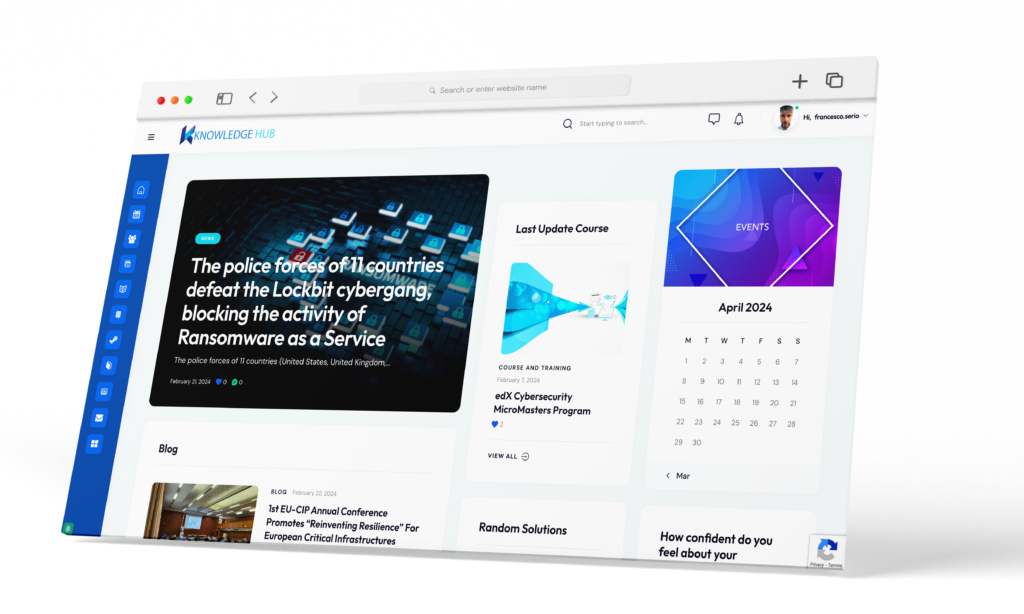
One of the overarching objectives of the EU-CIP project is to enhance the EU’s information analysis capabilities for data-driven evidence-based policy-making for European resilience. Among the tools developed and employed by the project to achieve this goal, the EU-CIP FAIR Data Observatory provides relevant information on policies, standards and research outcomes on CIP/CIR.
The Observatory leverages on the research and outcomes of EU-CIP project tasks to provide up-to-date information on policies, standards and research outcomes on CIP/CIR through a streamlined data collection, curation, analysis and update process. The Observatory data comply with FAIR principles (findability, accessibility, interoperability, and reusability) using a unique identifier and rich metadata, facilitating easy discoverability, accessibility and reusability by other stakeholders of the EU-CIP ecosystem, including research and academic actors.
The Observatory, being developed during the whole duration of the project, had its first release in spring 2023.
How to access the FAIR Data Observatory
This blog summarises the features currently available online at www.eu-cip.eu-vri.eu (Figures 1-3). The members’ area of the system, currently available primarily for the project partners, can be accessed upon approval of the project and obtaining credentials from Steinbeis EU-VRI (www.risk-technologies.com, access requests at: info@eu-vri.eu).

What does it offer the users from the CIP/CIR community
The Observatory provides users with information on resilience indicators, policies, standards and research results. Users can access this information in multiple ways such as:
- providing summary graphs
- providing summary tables
- selecting an item in the cloud-of-terms
- selecting category or categories
- following links among the different elements of the Observatory (e.g. among standards or research projects).
The latter yields the added value of the Observatory allowing users to explore the automatically identified relationships among the data. These relationships are identified based on the semantic analysis of stored information (text) and graphically depicted as a network (Figures 4-6).

This is of great advantage for the user as it also provides an overview of the related information, e.g., as seen in Figure 7, the result includes all the relevant standards providing the response to a search on “guidelines” & “risk”.
In addition, the Observatory offers more tools to the community and to the EU-CIP project in particular, including:
- Survey tool
- Project risks analysis tool
- Semantic analysis too
- SWOT tool (planned for rev. 2 of the Observatory)
The survey tool is important for the information collection process taking place during the EU-CIP project, as it allows partners to:
- Create dedicated and EU-CIP-controlled surveys (no need for commercial tools)
- Communicate with participants (bi-directional communication)
- Show results in real-time
An example (survey among the IAB members) is shown below (Figure 7).

The project risks analysis tool allows users to:
- Register risks
- Show mitigation options
- Monitor risks in time
- Use data for SWOT analysis
An example is shown in below.

More tools are envisaged to be added to the Observatory in the future releases, including the tools for innovation monitoring and SWOT analysis.
How to contribute to the Observatory
It is possible and envisaged to contribute to the EU-CIP FAIR Data Observatory, both from the side of the project partners and from the external ones. This can be done by entering data as a single item or in bulk (e.g. a list of research results or standards). In each case, the metadata related to both the documents and the provider must added (Figure 10). Single entries are made directly via the user interface, while for bulk data entry, Excel templates are prepared and directly imported by the Administrator.

Added value for EU resilience
The EU-CIP FAIR Data Observatory aims to become a resource of valuable information on policies, standards and research results for the CIP/CIR community. Its added value lies in the fact that it offers users the opportunity to correlate information and visually demonstrate relationships between data. Apart from the area of standards, this can be of particular importance for the “navigation” across the constantly growing area of EU and national CIP/CIR related regulations.
Steinbeis EU-VRI, October 2023
